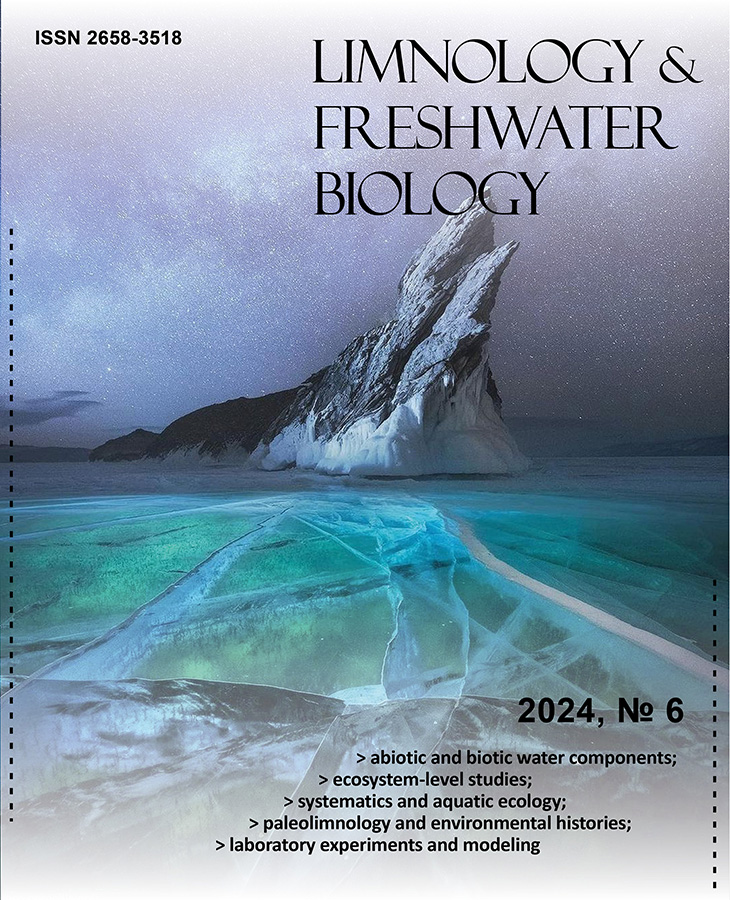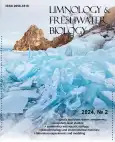No 2 (2024)
- Year: 2024
- Articles: 3
- URL: https://journals.rcsi.science/2658-3518/issue/view/18487
Articles
Biostratigraphy of Late Holocene bottom sediments from the Northern part of Chukchi Sea
Abstract
The research goal is the investigation of environmental processes of recent sedimentation in the Arctic Ocean area. A short core (length – 37 cm) was taken from the Northern part of the Chukchi Sea. Analytical methods included macroscopic sedimentological description by smear-slides, dating by γ-measurements of 137Cs and 210Pb, diatom and palynological analyses. Sedimentation rates at the research site have been determined to be 1 mm y-1. Thus, the age of the cored sediments spans approximately 400 years, which includes the period of the Little Ice Age. Abundant cold-water diatom species and spores of terrestrial plants within the lower part of the sediment core are characteristic for cold climate conditions, which dominated the Little Ice Age. The occurrence of Jurassic, Cretaceous, and Neogene species of spores and pollen in the Holocene deposits are the evidence of coastal abrasion and the subsequent transfer of the material to the coring site by currents. Southern, subtropical, and tropical species of diatoms within the upper, more recent part of the core reveal the transfer of material by currents from the Pacific Ocean to the Arctic Ocean through the Bering Strait. The results of biostratigraphic analyses indicate environmental changes during the last 400 years, revealed in bottom sediments of the Northern part of the Chukchi Sea.
 48-57
48-57


European whitefish Coregonus lavaretus of the Nizhnetulomskoye Reservoir (Tuloma River basin, Murmansk region) and its habitat conditions
Abstract
The modern biological characteristics of the most common polymorphic species of European whitefish Coregonus lavaretus (L.) in Northern Europe were studied in the conditions of its habitat in the oldest riverbed reservoir in the Murmansk region. A number of features of the functioning of the ecosystem of the Nizhnetulomskoye Reservoir (hereinafter NTR) have been identified, including eutrophication of the reservoir, accompanied by the development of cyanoprokaryotes in phytoplankton communities, including potentially toxic species. The introduction of the Onega smelt Osmerus eperlanus (L.) into the Tuloma River system half a century ago led to the transformation of the structure of the NTR fish community from whitefish-salmon to whitefish-smelt. Whitefish (hereinafter, this species name is only used in regard to the European whitefish) in the NTR are represented by a polymorphic population and, according to length-weight characteristics, belong to the group of medium-sized whitefish of the Murmansk region watercourses with early maturation. Based on the type of feeding, it can be classified as a benthophage with a wide range of consumption of food organisms. The stomach contents of whitefish in the summer-autumn period correlate well with the seasonality of the development of aquatic invertebrates. Artificial feeds used by the farms of rainbow trout Oncorhynchus mykiss (Walbaum) in the reservoir are currently of great importance in the feeding of the NTR whitefish. Understanding the mechanisms of structural and functional differentiation of whitefish populations is both of fundamental importance in revealing the mechanisms and direction of microevolution and adaptation of fish in changing environmental conditions and of fundamental practical importance in the implementation of protection and rational fishing, their artificial reproduction.
 58-97
58-97


Evaluating the water quality status using selected indexes and the aquatic arthropod species composition of the Idim Eye-Asana River, south Nigeria
Abstract
The objective of the study was to evaluate the water quality status and the aquatic arthropod species composition of the Idim Eye-Asana River, Edebom 1, between May and July 2023. The sampling area was divided into four (4) sampling sites with unique coordinates. The physico-chemical parameters such as dissolved oxygen (DO), pH, temperature, total dissolved solute (TDS), inorganic contents; nitrate, sulphate, nitrite, and phosphate were measured using standardised methods. The aquatic arthropod specimens were collected using standardised circular-framed net with a 0.05µm mesh size and 35cm in diameter with an iron handle of 2m in length. Single factor pollution index (Pi), Biological Monitoring Working Party (BMWP) index, and diversity indices were calculated to evaluate the water quality status of the river. The physico-chemical parameter results revealed that they were differently significant between the sampling sites. The inorganic contents (contaminants) results showed that nitrate, phosphate, nitrite, and sulphate were differently significant at a 95% t-test between the sampling sites. The Pi values for the inorganic contents revealed that the water quality at site 2 was moderately polluted (3.25) with nitrite, whereas sites 3 (2.85) and 4 (2.50) were lightly polluted. Three (3) arthropod classes, sorted into seven (7) orders, and thirty-four (34) families were collected. Through the BMWP index results, the water quality classification for the water status at site 1 was regular (moderately contaminated), site 2 (poor), and sites 3 and 4 (Good water quality). Sites 3 and 4 sections of the river had good water quality, and as indicated by the results, it was concluded that the sites (i.e., 3 and 4) have better ecological conditions that can sustain the development and survival of the aquatic arthropod species.
 98-107
98-107











